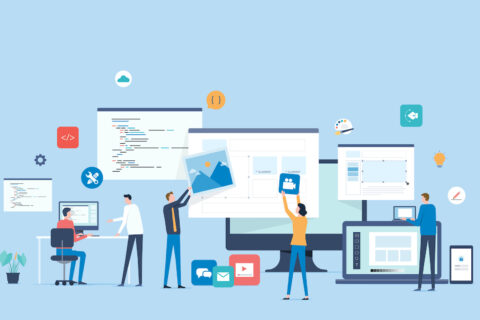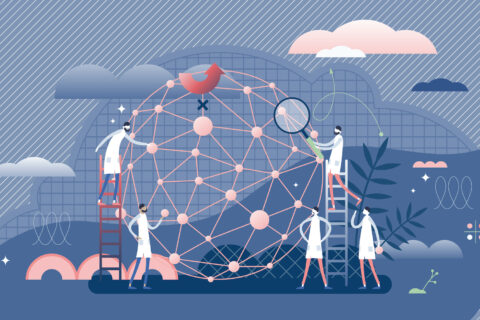For many of us, using new technology is something we do on a daily basis in our home lives. We use tablets to catch the news, mobile phones to check social media and even pop a virtual reality headset on to play games. But businesses can be slow to embrace new technology.
Many businesses often hang onto systems and ideas that belong in the last century. So, how can you drag your office into the 21st century? Here’s a look at five ways to get started.
1. Internet of Things (IoT)
Ever heard the term ‘Internet of Things’ (IoT) and wondered what it’s all about? One of the biggest developments in business tech falls under this title and it deals with the new connectivity of everything in the office.
The increasing capacity and speed of broadband and fibre optic Internet connections means that more can be done on every connection. From smart metres to regulate heat and light to printers that order their own refills, anything that has an on/off switch or a replacement component can be connected to the internet and operated through it.
Forget to switch off the lights in the office? It won’t matter, as an automated system will control lighting and heating, increasing energy efficiency and reduce utility bills. This is just one example and all the big tech companies are creating new IoT ideas every day.
2. Using the Cloud
At one time, offices would have a large on-site server that stored all of the company’s important data, ran the computers in the office, and connected to the internet. But the birth of the cloud means that much of a company’s data doesn’t need to be stored physically on-site and can be accessed through the internet instead.
Cloud-based services are particularly beneficial for businesses that have more than one location. Cloud computing allows ease of collaboration between colleagues based anywhere in the world. It can also save both time and space in the office as well as reducing costly security and servicing requirements.
3. Video Conferencing
Sending staff to meetings, flying in remote employees to HQ, or sending employee off-site for training is a thing of past with the various video conferencing apps and services now available. Everyone from Google to Apple to Facebook have created their own video conferencing facilities on-site and allow people anywhere in the world to meet up and discuss issues. Many services are free and, for courses, the video can be downloaded to be reviewed again later.
4. Smart Virtual Personal Assistants
While not replacing humans, smart virtual personal assistants or SVPAs can help in a range of ways for everyone in the office. Sorting out emails, managing calendars, and even organizing back office administration, each team member could have their own SVPA without costly operating costs that comes with traditional admin services. SVPAs can boost efficiency and increase productivity as well as make it easier for cross-team collaboration.
5. Virtual Reality
Looking a little further ahead, the use of virtual reality in the workplace is almost a guaranteed thing. The new headsets are aimed primarily at gamers but there is a score of work-based uses for the tech. From virtual meetings to design collaborations, the ability to see things in full three-dimensional form can be important for a huge range of businesses.
This article has been edited and condensed.
Stuart Cooke is the Marketing Manager at 4 Corners Sign, Print & Display Ltd, signage, exhibition, and vehicle graphics company that prides themselves on a modern yet efficient working environment. Connect with @4cornerssigns on Twitter.
© YFS Magazine. All Rights Reserved. Copying prohibited. All material is protected by U.S. and international copyright laws. Unauthorized reproduction or distribution of this material is prohibited. Sharing of this material under Attribution-NonCommercial-NoDerivatives 4.0 International terms, listed here, is permitted.













